Military Fitness – Part 40

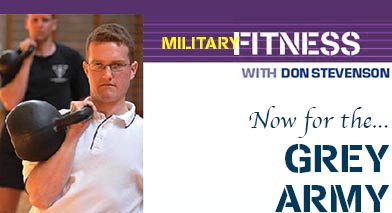
After last issue’s column on fitness for younger military recruits, it’s now time to turn our attention to the other end of the spectrum and look at some considerations for older individuals who are either already in the military or who are considering entering or re-entering the defence force.
Just like young recruits, older individuals have characteristics that can make them both easier and harder to work with.
Unlike younger people, anyone over the age of 35 has generally learnt that results don’t come overnight and they have much more patience.
They also tend to be more willing to follow a program to the letter without getting distracted by pictures of cats on the Internet.
I find that if someone has decided to enter the military later in life, they are highly motivated and determined to do whatever it takes to succeed.
On the downside, many older individuals still think they are 18 and bulletproof and fail to take into account the effects that aging has had on their ability to train hard and recover from intense sessions.
Older individuals may also have more complicated lives with careers, children and other commitments, which means that fitting in training can be more complicated than for someone in school.
Finally, the older you get the higher chance that at some stage you’ll have suffered an injury that can be aggravated by intense training.
So, keeping all of the above in mind, here are my recommendations for training for the military if you are between 35 and 65.
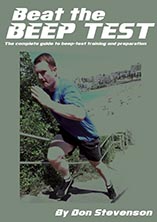 Beat The Beep Test by Don Stevenson is an 89-page complete e-guide to beep-test training and preparation.
Beat The Beep Test by Don Stevenson is an 89-page complete e-guide to beep-test training and preparation.
20% of proceeds from the sale of this e-book will be donated to Soldier On
.
General service
The first thing to do if you have not trained for a long time is to get the all clear from your doctor and get some basic range-of-motion testing done by a trainer or physiotherapist.
As you age, flexibility tends to decrease and accumulated muscle imbalances can place you at a higher risk of acute and chronic injuries from training.
Once you know where you are weak or tight, it is a good idea to spend a few weeks prioritising stretching, foam rolling, massage and corrective exercises to reduce the chances of getting injured as the pace of training picks up.
.
Make a plan
Once you have your flexibility and muscle imbalances under control it is time to structure a training plan.
In general, the older you are the longer it takes to recover from intense training so, where as an 18 year old might be able to train two sessions a day six days a week and still recover between sessions or after an extra day of rest, an older trainee may need to limit their training to four days per week.
If you are following a training program from the internet, a magazine or a book, it pays to keep in mind that most of these resources are written with the 18 to 35 age group in mind and that you may have to reduce the number of sessions per week and stretch a six-week program out over eight weeks, or by reducing the intensity and volume of the sessions.
In regard to each session in a training plan, it is still important to push yourself fairly hard, but don’t expect to lift as much or run as fast as you did when you were 18.
Another consideration is that of exercise selection.
I always recommend that older trainees minimise the amount of running and high-impact exercise they perform and substitute more low-impact exercise such as kettlebell training and rowing.
These activities can still be performed with a high level of intensity to build aerobic capacity but they also carry a low risk of giving you sore hips, knees and ankles.
.
Recovery
Finally, once you have completed a training session, it is critically important that you pay attention to your nutrition and recovery.
Ensure that you spend some time after each session working on your flexibility and have a post-workout meal that contains some easily digestible carbs and protein to aid muscle recovery.
Your overall nutrition plan should include lots of protein, fruit and vegetables and it is also a good idea to supplement with fish oil, a multi vitamin and extra vitamin D.
.
So there you have it.
While it is unlikely that at 40 or 50 you will be gunning for SAS selection, there is nothing to stop older adults from entering the ADF and contributing in a variety of roles (in fact, two of my previous clients – one over 40 and the other over 50 – were eventually deployed to the Middle East on operations and to Gallipoli).
.
.
.
.
.
.

.
.




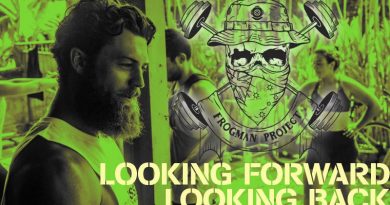
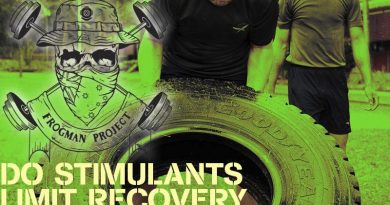
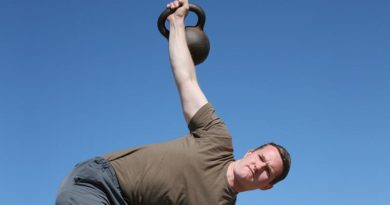
There are some great ideas here for those of us in the ‘grey army’, but could we have some pointers on an appropriate programme for those of us in the ‘advanced’ years who are getting older but still must meet AIRN standards. Some of us are continuing to serve well into our 60s (I know of one soldier who is 72 and still filling an important function) require as much maintenance (if not more in some Corps such as Infantry) as do the younger folk.